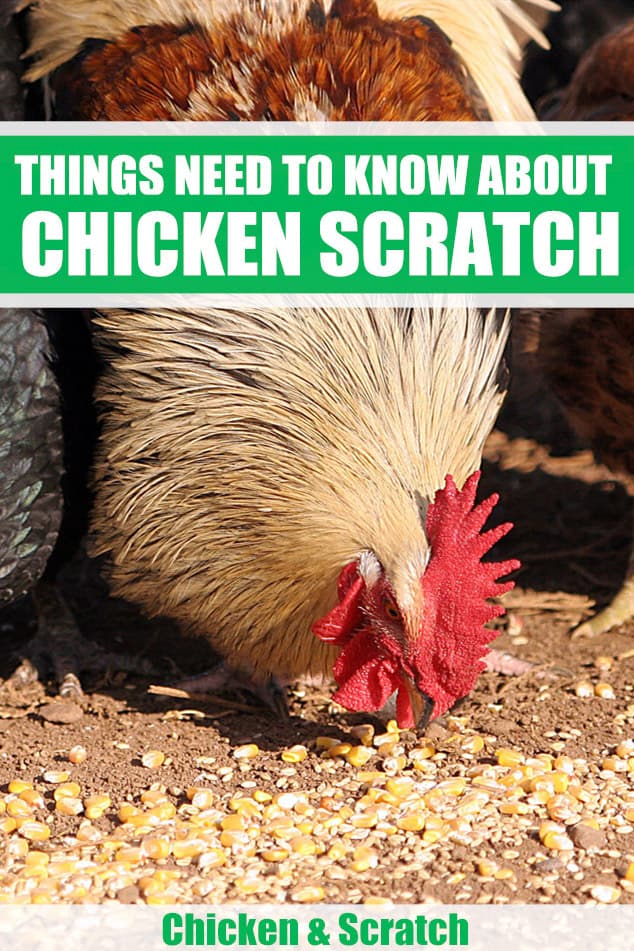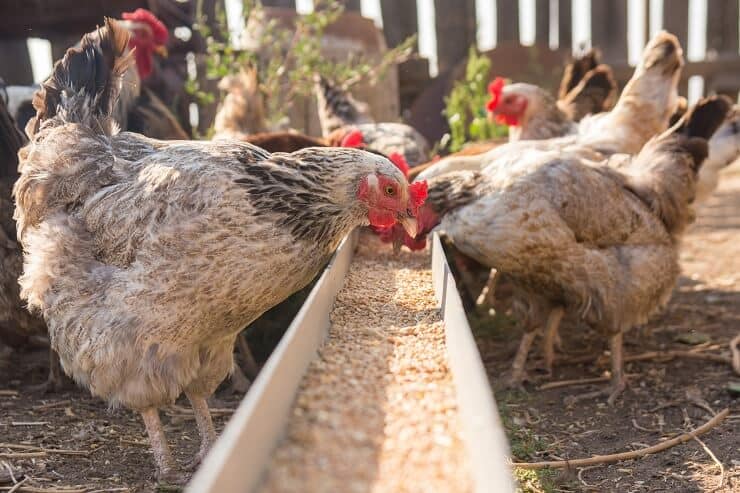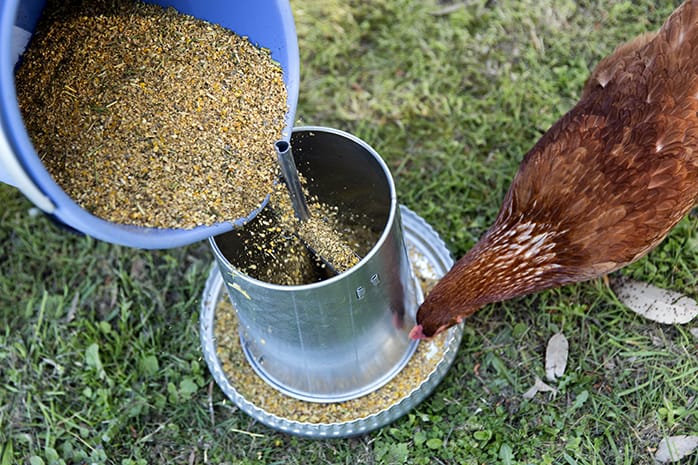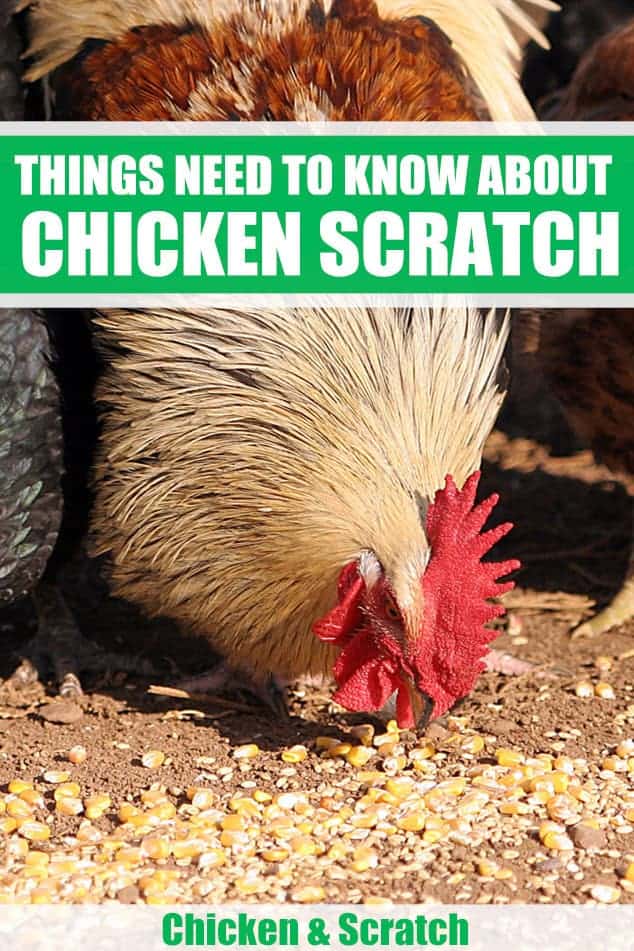Is Mg Hen Scratch Good to Feed

Raising chickens can be an enjoyable hobby, particularly if you reward them occasionally. A great way to do that is by feeding chicken scratch, which is something most hen breeds love. What is chicken scratch and how should it be used? Here is more information.
What is Chicken Scratch?
Chicken scratch is a type of feed that consists of different types of seeds and grains that hens enjoy eating. For example, it may contain cracked corn, barley, wheat, oats, or sunflower seeds. Considered a treat, birds will "scratch" around in the dirt to pick up every last bit, hence the name.
Scratch may have originated from early farmers, who would throw out their leftover grains and seeds for chickens to rummage through. The hens loved the food, and farmers were able to avoid unnecessary waste by giving it to them. By providing scratch, early farmers were able to stretch their regular chicken feed as well.
Difference between Chicken Scratch and Chicken Feed

Although chicken scratch and chicken feed are both types of food, there are nonetheless a few differences between them. The biggest one involves nutritional value. Commercial chicken feeds are fortified with minerals and nutrients such as selenium and calcium carbonate. Accordingly, it ensures healthy birds and high quality eggs.
Scratch on the other hand is the equivalent of giving your child junk food. That's because it lacks the nutrients found in commercial chicken feed. As such, it is not recommended as a diet staple. Instead, you may give it to your hens only occasionally to supplement their diet or as a treat.
Since it contains higher quality ingredients, the regular chicken feed will also cost more. Even so, the extra money you spend will pay off in the long run with a higher egg yield. Well-fed hens produce more meat with better nutritional value as well.
Some other major differences between chicken scratch and chicken feed include:
- Protein content. High quality chicken feed will contain between 15 and 18 percent protein while chicken scratch typically has less than ten percent protein.
- Calcium content. Chicken feed should have a calcium content of around three percent. Chicken scratch on the other hand normally contains little if any calcium. Low calcium content can result in very thin eggshells.
- Chicken feed does not encourage scratching activity. Accordingly, your hens may not be motivated to forage for bugs or to overturn their litter and maintain sanitary conditions.
- Availability. You can often purchase chicken scratch at department or pet supply stores. Chicken feed on the other hand is normally available only through farm-and-fleet stores.
Guidelines for Feeding Scratch Grains

Now that you know the difference between chicken scratch and regular feed, you can now learn how to use it. When given properly, chicken scratch can be an economical solution that you can enjoy giving to your hens. Here are some basics to consider.
How Much to Feed
Just because chicken scratch has lower nutritional value does not mean you should not give it to your chickens. However, you should ensure that your hens' diet is not primarily made up from scratch. Consequently, one guideline to follow involves seeing that no more than 10% of your chickens' diet consists of scratch grains.
One sign that you are feeding too much scratch involves a high amount of leftovers. When chickens are full, they will leave scratch on the ground where it can become wet and moldy. Leftover scratch can also attract insects and vermin. Anytime there is leftover scratch, you should clean it up immediately. Take note of the amount you are throwing away so that you can adjust your feeding the next time.
A good rule of thumb involves feeding your birds only as much as they can consume within a 20 minute period. After that time, you should clean up the remaining scratch.
Used in moderation, chicken scratch is unlikely to affect the health or laying capabilities of your hens. So if you notice a decline in health or decreased egg production, this may indicate you are giving too much scratch. Reduce the amount you are giving, or eliminate scratch completely. If you do not notice any improvement, consult with a veterinarian.
How Often to Feed Scratch

So long as you do not exceed the recommended limits, there is no set interval for feeding chicken scratch. Some farmers give it daily, while others will do so only on occasion. It really depends on your feeding habits and the availability of chicken feed or scratch.
Those who feed scratch daily will often mix it in with their regular chicken feed. This is a great way to ensure you do not overfeed your hens. However, if you do choose this method you should not give additional scratch as a treat because that would then result in overfeeding.
When should you Feed Scratch?
Many will give their hens scratch when they first get them because doing so helps them build trust. In that way, they can teach birds to eat from their hand. This is something that may make gathering eggs easier to do in the future. However, if you have raised poultry for some time but have never given scratch, it is never too late to start.
Those who show or train chickens may give scratch when teaching them new tricks. This is akin to a dog trainer using biscuits to achieve positive results. Many trainers claim that chicken scratch has helped their hens become comfortable enough being handled that they can essentially become pets.
One benefit of giving scratch is that it encourages natural scratching behavior. Accordingly, if your hens have recently been inactive due to illness or inclement weather, providing scratch can help them to get their activity levels up again.
As with humans, chickens require additional food during the winter. Therefore, you may want to give chicken scratch during a cold spell. Doing so will spur their digestive system to produce heat and help keep the birds warm. While scratch can help chickens stay warm, you should never feed more than 10% of their diet in the way of scratch. If your hens still need additional nourishment, provide it in the way of regular chicken feed.
You may wish to provide scratch just before bedtime. This will help your hens feel full at night so they are better able to get a good night's sleep.
Homemade Chicken Scratch Grain Recipe
As with chicken feed, you may purchase scratch in bulk. Even so, you may wish to make your own chicken scratch at home. Making your own chicken scratch is often more economical, and will give you a sense of accomplishment.
It also allows you to better control the ingredients to avoid artificial ingredients, GMOs, or unnecessary additives. Here is a basic recipe you can use to create your own batch of chicken scratch:
Add the following ingredients in an oversized mixing bowl or garden tub:
- 1 part cracked corn
- 1 part barley
- 1 part wheat
- 1 part oats
- 1 part sunflower seeds
- 1 part split peas
Mix the above ingredients by hand until they are evenly distributed. Store in an airtight container until ready to use. Keep this container in a dry location with adequate ventilation, and check regularly for signs of spoiling.
It isn't necessary to use all of the above ingredients in your homemade chicken scratch. So if you have only a few of the items, you can still make a delicious scratch meal that your hens are bound to enjoy.
You can also experiment with different variations to create a custom recipe. If you are on a budget, you may even want to limit the number of sunflower seeds you use since this can greatly add to the cost of making scratch.
Variations
For added variety, you may add a few handfuls of the following:
- Raisins
- Dried cranberries
- Peanuts
- Pumpkin seeds
When making homemade chicken scratch, you may purchase a bag of a commercial product that contains grains such as cracked corn, oats, or wheat and then add other ingredients you have around the house. This is a great alternative if you only have a few hens and do not want to buy several bags of grains.
You may also mix and match the ingredients based upon your hens' preferences. Some people will even add a few table scraps such as rice, broccoli, or watermelon rinds. When feeding table scraps, avoid the following items, would potentially be toxic:
- Greasy foods such as fried or fatty items, gravy, etc.
- Meats
- Eggs or egg-based dishes
- Milk or dairy products
- Potatoes and potato peels (russet potatoes only; sweet potatoes are actually not harmful to chickens)
- Moldy bread (you should also use bread only in very limited amounts)
Summary
Chicken scratch has been a staple for poultry growers over the years. Modern feeding methods haven't changed the need or desire for chicken scratch. Use wisely, and you will notice some very positive benefits from supplementing your hens' diet with scratch.

Source: https://cs-tf.com/chicken-scratch/
0 Response to "Is Mg Hen Scratch Good to Feed"
Post a Comment